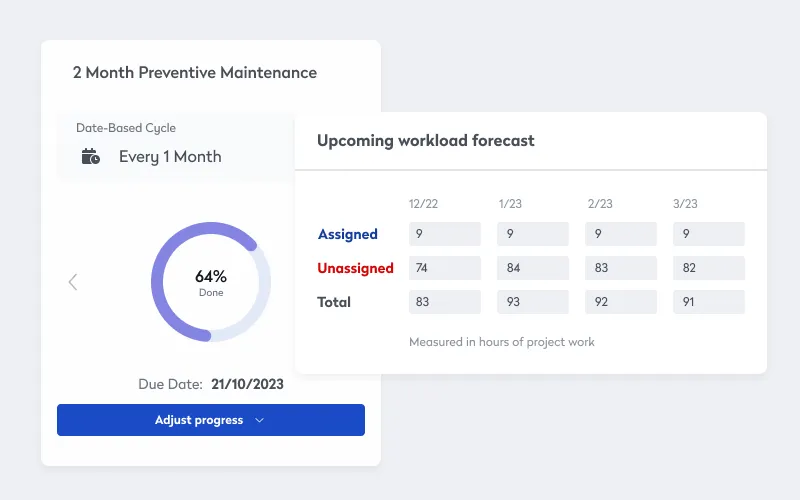
Infrastructure is the collection of facilities, structures, and systems we use to support trade and improve our quality of life. It’s everything from roads and bridges to libraries and swimming pools. Because they require large investments of time and money, the only way to see a return on our collective investments is if we can use infrastructure for as long as possible. And for that to happen, we need efficient, effective maintenance programs.
What is infrastructure?
There are many kinds of infrastructure, each with its own specific role, but they all fall under a broad, basic definition. Infrastructure is the facilities, structures, and systems required for the operation of a society or enterprise. Large-scale examples include subway systems and telecommunications networks, but infrastructure can be as small as a community pool.
Although people tend to think of infrastructure as tax funded and government run, there is also private infrastructure.
Examples of public infrastructure
Governments develop, own, and operate public infrastructure.
Example can include:
- Transportation: roads, bridges, railroad lines, ports, and airports
- Energy: power plants, electrical stations and lines
- Water: dams, aqueducts, sewers, and treatment plants
- Social: schools, hospitals, parks, swimming pools, and libraries
- Communication: telecommunication networks
There’s also a lot of “soft” infrastructure, which are government-run services like courts of law, regulatory agencies, and police forces.
A big part of the definition of public infrastructure is that it’s open to or provides services for the public. For example, everyone can visit the local library, and everyone gets to drink clean water from the water treatment plant.
Examples of private infrastructure
Private infrastructure is the facilities, structures, and services at the foundation of a business. They are there to support business operations. Examples include office space, communication systems, software services platforms, and company roads. Unlike public infrastructure, only company employees or customers use the infrastructure.
Why is maintenance infrastructure important?
Infrastructure is the physical building blocks of civilization. It’s how societies and the enterprises that create the economic activity that drives them survive and thrive. Without the right infrastructure, you likely wouldn’t be here. And if you were, you certainly wouldn’t want to be.
That’s why infrastructure maintenance is so important. Maintenance is what keeps the infrastructure, and by extension many of the good parts of modern life, up and running. It also ensures that the infrastructure lasts for as long as possible, delivering a good return on our collective investments.
Infrastructure maintenance plays critical roles in:
- Public safety
- Economic growth
- Quality of life
- Protection of investments
- Environmental sustainability
It also ensures preparedness in cases of extreme weather and natural disasters.
How does maintenance management software make infrastructure maintenance easier?
Infrastructure maintenance is important, but it’s also challenging. There’s a lot of work, and you must complete it properly and on time. Modern maintenance management software boosts efficiency and effectiveness by helping you capture, secure, share, and leverage critical data.
Centralized data
If you’re still trying to run a maintenance program with paper or spreadsheets, you already know about all the baked-in frustrations.
With paper, it’s hard to generate or share data but very easy to lose it. There’s only so much you can scribble onto a sheet of paper, so you’re generally sending techs out with less than they need to work efficiently. But even if you could jam a lot of information into a paper-based work order, there’s always the real risk of you or your tech misplacing it. Remember, maintenance techs aren’t working from behind desks. Out in the field, it’s easy to accidentally lose or damage a sheet of paper.
With spreadsheets, it’s easy to generate data but hard to keep it all up to date and organized. Remember, two copies of the same file turn into two versions of the file as soon as someone makes even the smallest change to one of them. Everyone ends up working from different data.
A unified platform helps you pull all your data together, so everyone on the maintenance team is working from a single source of truth. And it’s not just data about on-demand and preventive maintenance work orders. Modern solutions have comprehensive asset data, including lists of associated parts and materials, and even digital schematics and manuals.
Scheduled preventive maintenance
If you want your assets to last, you need a full set of scheduled preventive maintenance inspections and tasks. There’s no other way to ensure you’re finding and fixing small issues before they have a chance to fester and grow into budget-busting problems.
A modern digital solution helps you set up, schedule, assign, and track a preventive maintenance program. Once you’ve decided on your inspections and tasks, you can add them to the software as templates. Next, when you’re generating and assigning preventive maintenance inspections and tasks (PMs), you can quickly add all the information that’s already in the template, including:
- Step-by-step instructions
- Customizable checklists
- Associated parts and materials
- Safety hazards
- Digital schematics and manuals
You can even add interactive site maps and floor plans, helping you get techs right where you need them, right away. Instead of them walking around in circles trying to find an asset or piece of equipment, they know exactly where to go.
Always-on mobile app access
And once they get there, they can use the mobile maintenance app to work even more efficiently. Remember, infrastructure assets tend to be big and spread out. The last thing you want is for a maintenance technician to arrive onsite and then have a bunch of questions. With the mobile app, they get the answers they need no matter where they are.
Is this the right asset or equipment?
With bar codes, techs can instantly confirm they’re working on the right asset, which is critical to saving time, materials, and parts when working on banks of repeating assets. For example, a technician working inside a hydroelectrical dam needs to know which of the five pumps installed in a row to fix. Another technician, this time working on the water filtration system at a community pool needs to know which weir to adjust.
A quick scan of the bar code with the built-in camera on their mobile device unlocks critical asset data, including any associated open work orders.
Did I do the work correctly?
With direct image uploads, techs can request a remote visual inspection of their work before closing out. All they need to do is take a couple of quick pictures of their work before uploading them to the work order. Back in the maintenance office, the maintenance lead can check the work before giving the go-ahead to close it.
Infrastructure is the building blocks of societies and business, and infrastructure maintenance is how we ensure quality of life and economic prosperity. With a modern unified facility and maintenance management solution, teams can ensure they complete work effectively, efficiently, and on schedule.






